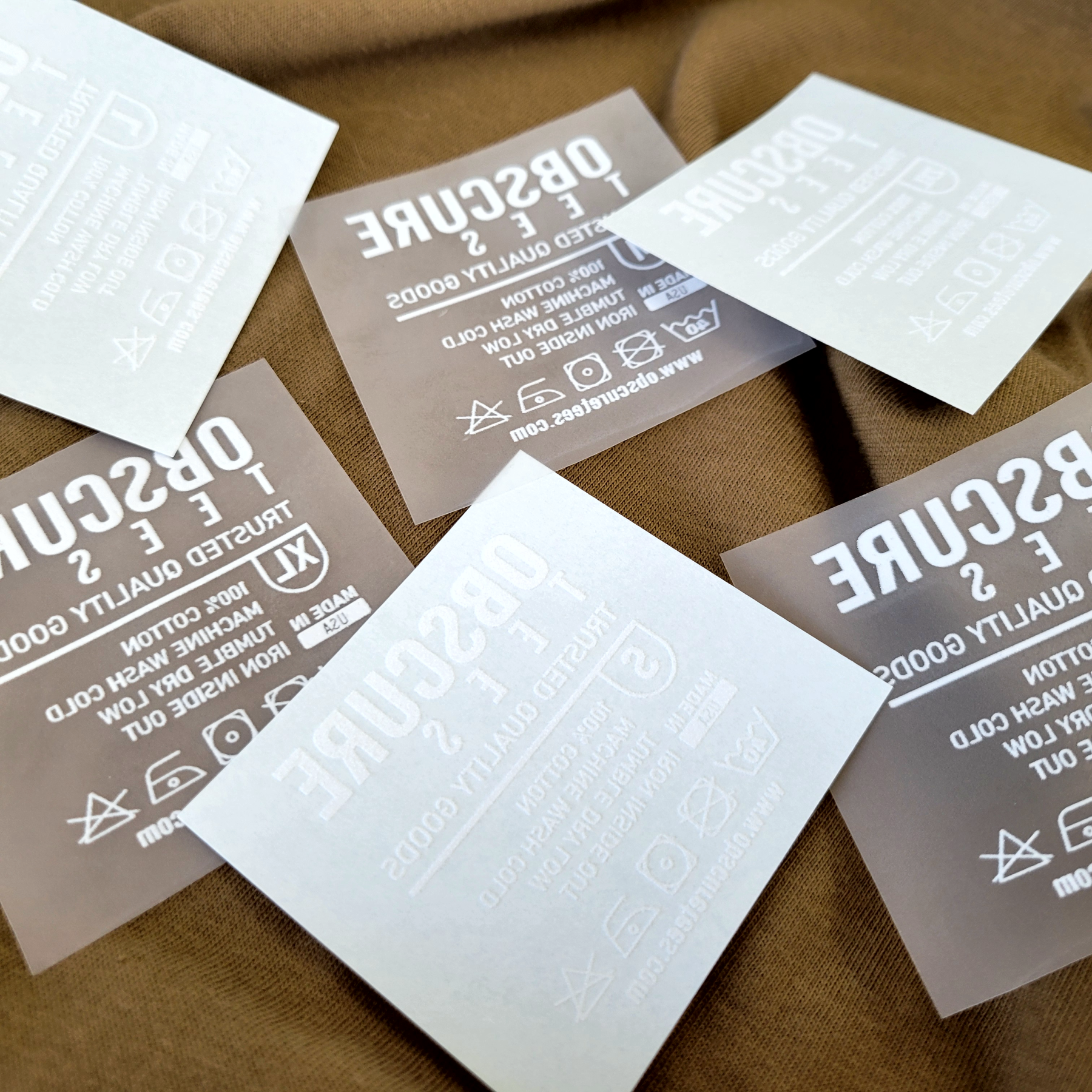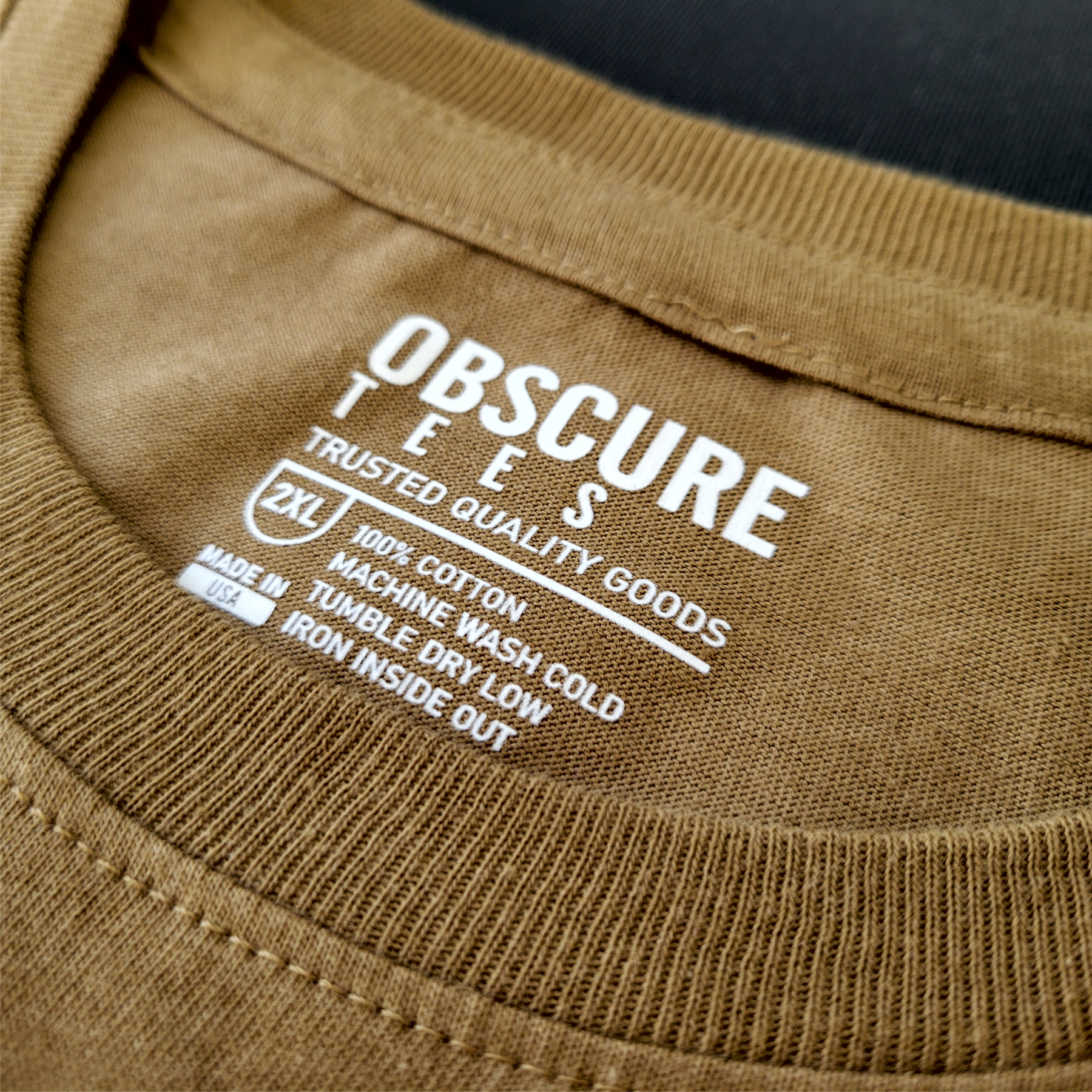Tagless Labeling: DTF vs. Screen Print Transfers
When it comes to customizing apparel with tagless labels, two popular options stand out: Direct-to-Film (DTF) transfers and screen print transfers. Both offer vibrant designs, but beneath the surface lie distinct advantages depending on your project's needs. Let's delve into the intricacies of DTF vs. screen print transfers for tagless labeling.
Color Explosion vs. Spot-On Accuracy
DTF excels at complex, multicolored designs. Its CMYK printing (Cyan, Magenta, Yellow, Key Black) creates a vast color spectrum, ideal for photorealistic logos or intricate artwork that can’t be achieved using screen print transfers. However, screen print transfers allow for precise color matching utilizing plastisol inks and the Pantone Matching System. This ensures your brand's specific shade, like a unique shade of red, is matched with precision and with consistency.
Small Batch vs. Bulk Ordering
DTF shines for low-volume orders or personalized tagless labels. The digital printing process eliminates screen setup costs, making it economical for small runs. Screen print transfers, on the other hand, thrive on bulk orders. Setting up screens has a fixed cost, but the per-unit price drops significantly with higher quantities. Large scale gang sheets like the Mega Gang (16.5” x 27”) also give screen print transfers the edge when it comes to high-volume customization.
When it comes to choosing between DTF and screen print tagless labels, the volume of your order may dictate which product is best.
Softness vs. Breathability
At small scale, DTF transfers boast a lightweight, almost satin-like finish. This can feel very comfortable on the skin, especially for tagless applications. Screen print transfers, while still comfortable and smooth, might have a slightly thicker, more traditional print feel. However, screen print transfers often have better breathability due to the ink types used.
Fine Details: A Balancing Act
Both methods can handle intricate designs, but screen print transfers edge out DTF in terms of fine lines and crisp edge detail. This means screen print transfers can produce sharper details, ideal for tagless labels with designs that have very thin lines or small text.
Can you tell which product is pictured: DTF or screen print transfers?
The Application Showdown
Both DTF and screen print transfers are user-friendly and easy to apply with a commercial grade heat press. While DTF can be applied as low as 275°F, screen print transfers typically apply at a higher temperature, starting around 310°F. This would give DTF the edge if scorching is a concern. Both options are a hot peel application, but DTF requires a second press to ensure proper adhesion and improve surface texture, meaning screen print transfers may be more time efficient.
The Verdict: It Depends on Your Vision
There's no single winner. DTF is ideal for low-volume, full-color tagless labels, while screen print transfers reign supreme for high-volume orders requiring precise color matching and breathability. Consider your project's scale, design complexity, and desired feel to make the perfect choice for your tagless label needs. With both DTF and screen print, you can achieve stunning results that elevate your garments to a whole new level of branded bliss.


